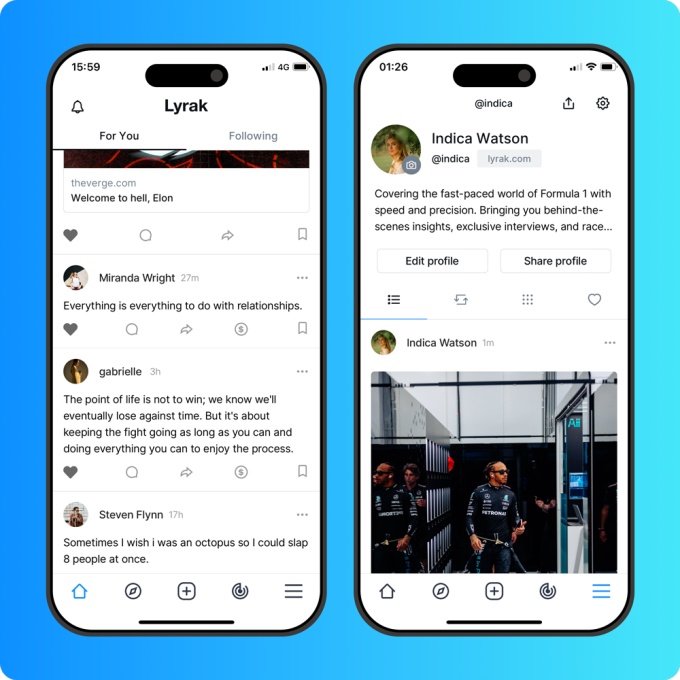Lyrak is entering the arena of X competitors with a unique twist: a focus on real-time news and creator monetization options, similar to X, but with integrations into the fediverse, akin to Instagram’s Threads. The fediverse, powered by the ActivityPub protocol, represents a decentralized social network ecosystem where interconnected servers host various platforms like Mastodon.
While Mastodon stands as the most prominent federated social app, even industry giants like Meta have recognized the significance of ActivityPub integrations, as evidenced by the development of Threads.
Lyrak’s vision involves amalgamating the strengths of Twitter with ActivityPub integration, enabling users to engage with a broader audience across federated social networks such as Mastodon.
Although the integration is not yet operational, the Lyrak team plans to commence work on it in the coming months. Once implemented, Lyrak users will have the capability to view posts from Mastodon users and reciprocally interact with them.

Rishi Siva, the founder of Lyrak, drew inspiration from the lead character in the TV series “His Dark Materials,” Lyra, when naming the platform. Lyra’s journey of discovery through new worlds resonated with Siva’s ambition to create something innovative and transformative with Lyrak.
The genesis of Lyrak stemmed from Siva’s experience assisting small businesses in establishing their online presence to enhance revenue generation and customer acquisition. While exploring various avenues, including the development of a Thumbtack-like app, the challenges posed by the COVID-19 pandemic hindered its growth, particularly affecting local tradespeople.
Despite setbacks, Siva remains committed to empowering users to effectively monetize their content and skills online. Lyrak distinguishes itself by offering lower fees and sharing 50% of ad revenue with creators, aligning with its mission to support users in achieving their financial goals.
In contrast, X’s revenue-sharing model, which varies based on factors like post type, demographics, and user status, is not publicly disclosed. Furthermore, revenue generation on X is primarily limited to ads displayed to Verified users, who are paid subscribers.










